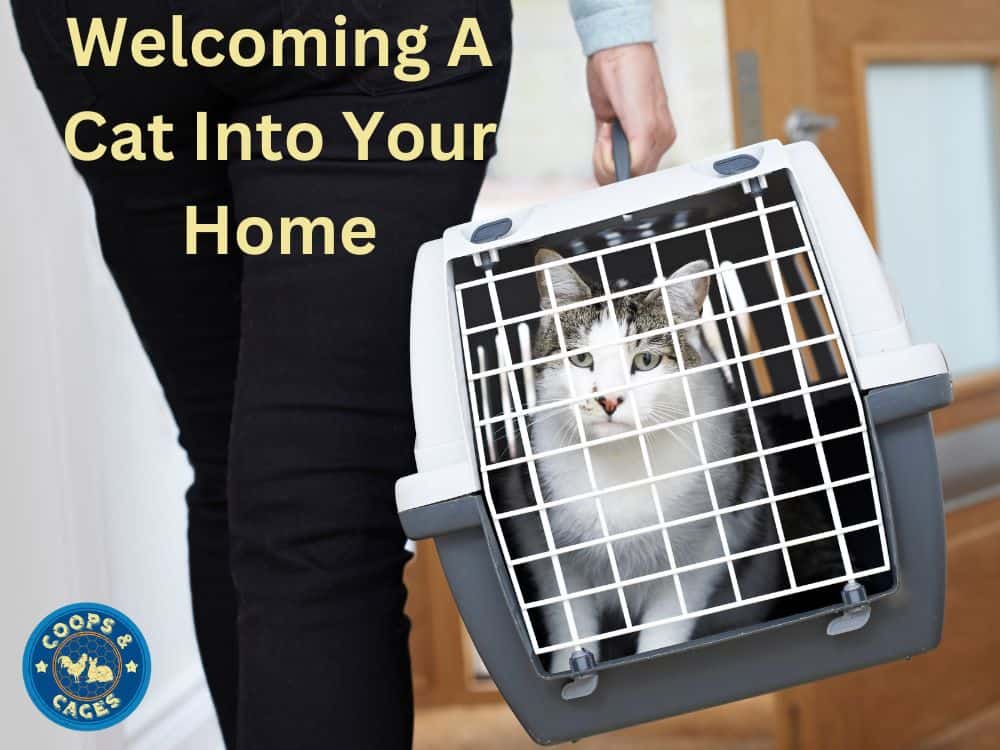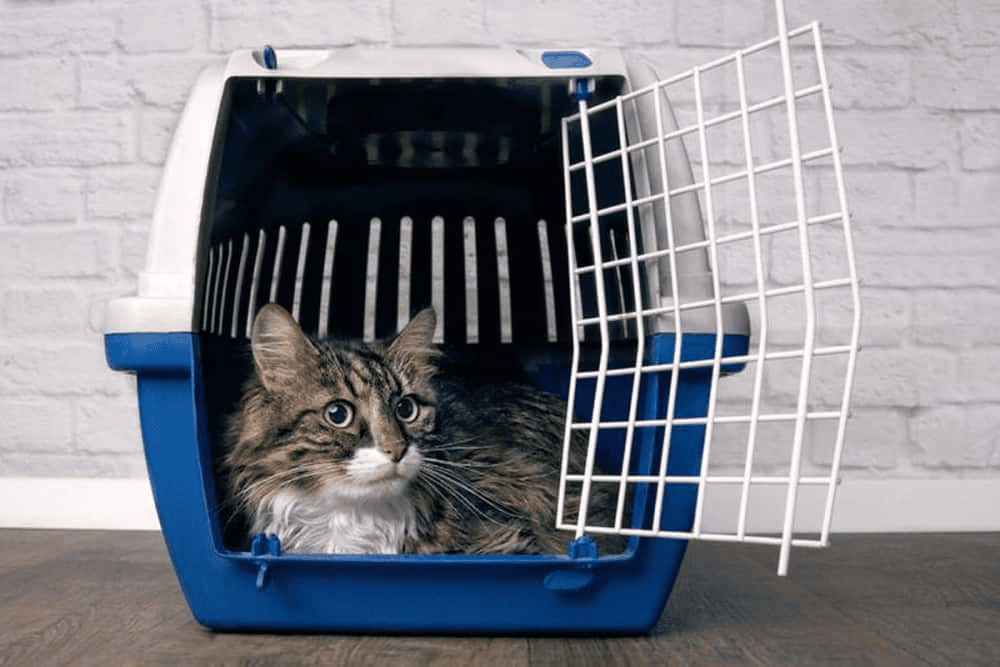Cats
Cat Getting Used to New Home
Are you considering bringing a new cat into your home?
It’s definitely a big adjustment, but it can be so rewarding to have a pet that loves you unconditionally.
There are a few things you need to keep in mind before making the commitment. In this post, we’ll outline some of the most important things to think about and prepare for before introducing a new feline friend into your family.
We hope this information will help make the transition as smooth as possible for both you and your new addition. Keep reading for tips!
Choosing a Cat
There are a few things you need to keep in mind when choosing a pet cat. Not all cats are alike, and each one has different needs. You’ll want to find the right cat for your lifestyle and personality.
Adopting an Adult Cat
Adopting an adult cat from an animal shelter or rescue group is a great way of giving an older cat a second chance at life.
Older cats can sometimes take longer to adjust to a new environment and to bond with you.
But there are many advantages of an older cat – they are more independent, have less energy and are already litter trained.
Plus you can spend time with the cat and get to know their personality before deciding if they suit your family and committing to adopting them.
Buying a Kitten
When you buy a kitten, their personality is more of a lucky dip! Kittens also need more attention and are very active.
However, a new kitten won’t have already formed any bad habits and will usually form very strong bonds with their humans if you get them in their early days.
If you are buying a kitten, consider what breed you want. Think about what you really want out of your pet cat then do some research and look for a breed that suits your needs.
Many people like the look of certain fluffier breeds and can get tempted by cute photos they have seen online.
More important than appearances, you really need to consider the breed’s personality and needs. Some breeds will be friendlier and more suitable for families with young children. Other breeds will have longer hair and you will need to dedicate time to grooming them.
The best way to truly find out what a breed is like is to talk to people who already own them and ask for an honest review.
Preparing Your Home
Before you pick up your new cat, you will need to prepare your home.
Buy everything your cat will need – food and water bowls, litter box, bedding, and toys.
Cat proof your home and hide away any hazards such as electrical cords.
Cat Enclosure
Setting up an outdoor cat enclosure gives your cat a safe area where it can enjoy the sunshine and fresh air outside without being able to wander off.
Cats in enclosures typically live longer than outdoor cats allowed to roam. This is because they are protected against predators, fights with other cats, cars, and being lost or stolen. Plus their exposure to harmful fleas and ticks is minimised.
Other Pets
If you are going to keep your cat indoors, consider how it will react with your existing pets.
If you have pet fish or birds, make sure the cat won’t be able to access their tank or cage. Try to keep them as far away from your new cat as possible.
Remember that cats can climb and jump, so height is not much of a problem for them.
Cat Carrier
Consider how you will transport your new cat home. Many cats feel uncomfortable with car rides. You can’t just sit your cat next to you in your car – your cat may be nervous, jump around and distract you while driving.
We recommend using either a plastic cat carrier or a small pet crate to transport your pet to its new home. These will give you peace of mind knowing it is safely contained throughout the journey.
Some cats will happily hop into the carrier or can be lured in with food treats.
If your cat is refusing to get into the carrier, follow these steps:
- Sit the carrier upwards with the door facing the ceiling. Open the door.
- Wrap your cat in a towel. You will need to be firm enough to stop your cat moving around. However, be careful not to injure your cat or restrict breathing.
- Quickly lower the cat in and shut the carrier door. No need to remove the towel.
See more carrier tips by clicking here.
The First Days Your Cat is Home
Moving to a new environment can be one of the most stressful events for a cat. You will want to make the process as gradual and as calm as possible.
For the first few days, limit your cat’s interaction with other members of your household and do not force interaction with other cats.
Existing cats can take a while to get used to a new friend, so slowly introduce them and supervise them for the first few weeks.
Safe Room
At first, just put the cat into one room. This will be the ‘safe room’. This will ideally be a spare room you won’t need to use in the meantime.
A safe room is your new cat’s own space where it can feel comfortable. It can be by itself in this one room, away from other pets and children.
The room allows quiet time. Your scared cat may hide away if it feels unsafe. Include plenty of hiding places such as cardboard boxes or a cat cave. Plus anything else your cat may need – bed, litter box, food and water bowls, etc.
Also include a nightlight until it is more familiar with its new surroundings. A cat’s vision is best at low light.
Over the next few days, leave the room door open and gradually increase your cat’s access to the rest of the house. Let it explore this new territory in its own time.
How Do you Calm a Cat in a New Home?
If your cat appears agitated even in its safe room, you may need to take some extra steps to calm it down and help it adapt to its new home.
Provide an additional hiding place in a quiet corner of the room, such as the Pixie cat cave.
When your cat responds positively to something new, reward it with its favourite food.
Purchase calming pheromone products from a pet store or vet. These can come in the form of a collar your cat wears or a diffuser you plug into a power point. The product will release a pheromone that is proven to help cats relax.
How Does Moving Affect Cats?
Most cats will dislike moving to a new environment. They naturally hate change and the experience can be stressful for them.
Like all animals, each individual cat adjusts at a different rate. Some will feel comfortable in a new home faster while others many take weeks before they truly feel safe.
As a pet owner, it is your responsibility to do you best to help your cat adjust slowly and feel secure.
Can a Cat get Traumatized after Moving into a New House?
It is unlikely your cat will experience any long term trauma from moving into a new house. As long as their new surroundings are comfortable and safe.
However, your cat’s stress right after the move can lead to short term behavioral problems and aggressive behavior. This can include biting, hissing, fighting with other animals and damaging your furniture.
If you notice signs of stress early on, you should make efforts to help your cat adjust and teach it that its new home is safe.
Can an Adult Cat Adjust to a New Home?
A cat of any age can adjust to moving house. On average, a kitten or younger cat will adjust to changes faster.
An older cat may take a few weeks to adjust to a new home. As an owner, you will need to make more of an effort to help your older cat feel at home.
Other factors can influence a cat adjusting to a new home. Confident and friendly cats will usually adjust faster than unsociable cats.
Similarly, cats that have moved house previously or had multiple owners may adjust faster than a cat that has only ever lived in one home.











My kitten makes a great companion, when she frist arrived she was a little nervous, and would hide alot, but now she is fine and apart of the home.